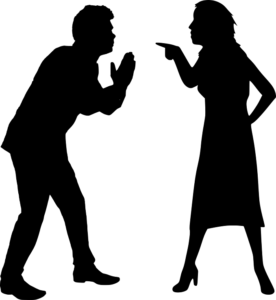This article will address the 5 common types of bullying. Bullying is the tendency to deliberately cause harm, discomfort, or humiliate others repeatedly. Most often, the bully picks on people that are smaller, weaker, or vulnerable in some way. This vice potentially harms the self-esteem of the victim and may cause mental health disorders such as depression and suicide. Most often, we imagine bullying to be all about punching, pushing, kicking, or any physical harm. This is because it is the most visible form of bullying that usually has some form of evidence attached to it. But bullying can occur in many other forms.
Who can be a bully?
Bullying is mostly associated with children, teens, and institutions of learning. But bullying can happen in the home, at the workplace, and in romantic relationships. A bully can be a sibling, an aggressive teen, a romantic partner, colleagues at work, a neighbour, an insensitive friend, etc. It can occur in any form of relationship and in any age group. It is not only tailored to the young ones.
What are the common types of bullying?
There are five common types of bullying. In as much as physical bullying is the most evident, the more hidden types of bullying may cause more mental torture. This is because it’s hard to prove the incidences of bullying which make it hard for the victim to reach out for help or to be helped.
Physical bullying

This involves exerting physical harm on the victim such as kicking, pushing, slapping, punching, spitting, etc. It also includes threats to do these things or installing fear in a victim. Physical bullying also involves stealing from a victim, ruining their property, or harassing them.
Verbal bullying
Usually, verbal bullying starts off as harmless. But over time, the victim starts to get affected mentally and may not be in a position of speaking out to the bully or communicating how they feel about the whole thing. Verbal bullying may involve teasing, name-calling, insults, racists remarks, intimidation, harmful sarcasm, body shaming, and many others.
Social bullying or Relational aggression
This is an indirect form of bullying designed to cause the victim humiliation by harming his/her social reputation repeatedly. It is the hardest to identify because it is usually done behind the victim’s back but by the time the victim is aware, it is usually too late and harm has been done. It’s most commonly done by females than men.
Social bullying may come in these forms;
- Playing nasty jokes with the intent to humiliate someone
- Spreading rumors and lies about someone
- Intentionally damaging one’s reputation
- Ignoring or excluding someone
- Influencing others to exclude someone socially
- Intentionally ruining friendships and relationships
- Negative facial expressions or contemptuous looks
Cyberbullying

Cyberbullying is described as repeated and intentional harm inflicted through the phone, computer, or other electronic devices. It can occur as overt or covert. It can occur as;
- Excluding someone online
- Saying hurtful or abusive thing to someone through text, mail, social media posts, images, or videos
- Impersonating others online with the intent to send messages to others on their behalf or steal personal information
It’s a fact that technology has brought evolution and ease of life, however, it has its evils such as cyberbully. This is the most common and most trending form of bullying today. Bullies prefer this form of bullying because they don’t have to face their victims and it spreads faster with longer-lasting effects. It is the worst form of cowardice because the bullying often says things that they do not have the courage to tell the victim in person.
Prejudicial bullying
This involves bullying targeted at people that are different in terms of race, religion, social standing, appearance, or body function. This form of bullying may encompass all the other forms of bullying. Most often, prejudicial bullying may lead to hate crime.
Effects of bullying on the victim

Bullying has long-lasting and potentially lethal effects as it has a social and emotional impact on the victim. It plays on one’s emotions, feelings, thoughts and affects his/her interaction with others. Bullying causes loneliness, isolation, fear, hopelessness, shame, anger, bitterness, self-hate, and other unhealthy emotions in the victim. It may also cause mental health challenges such as low self-esteem, anxiety, depression, eating disorders, self-harm, suicidal tendencies, and suicide.
If it happens in schools, the victim is likely to suffer poor grades, skip class or drop out of school. It may also be a cause for substance abuse such as alcohol and drugs and risky behaviour.




